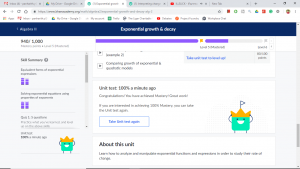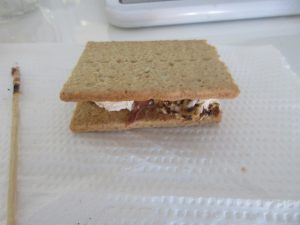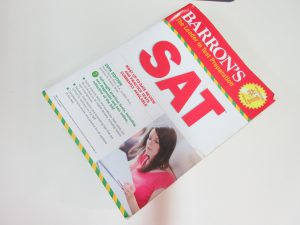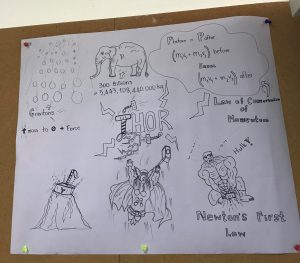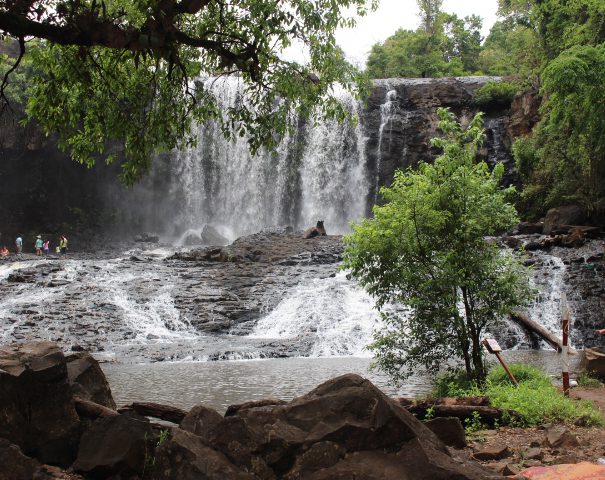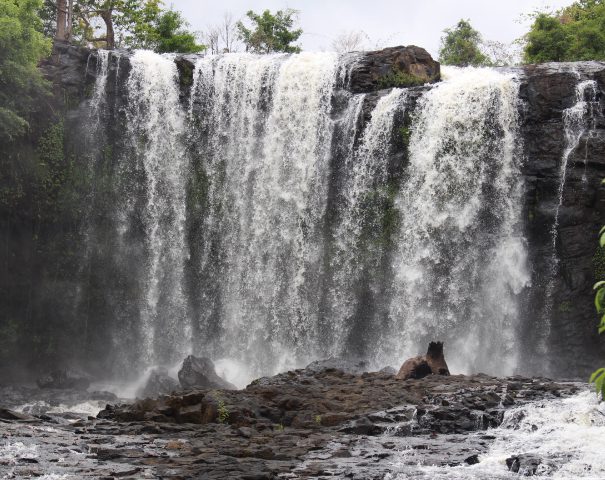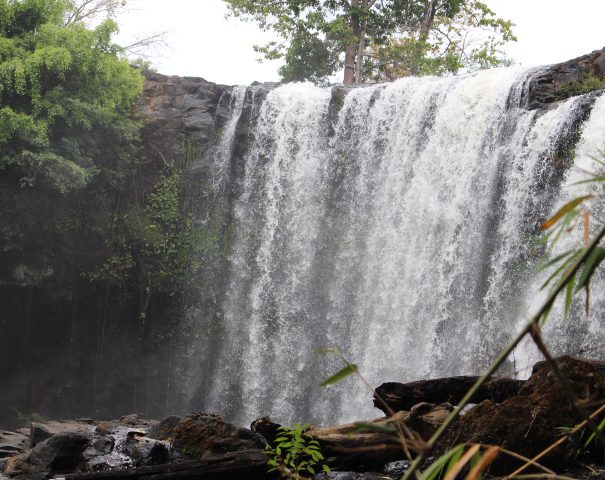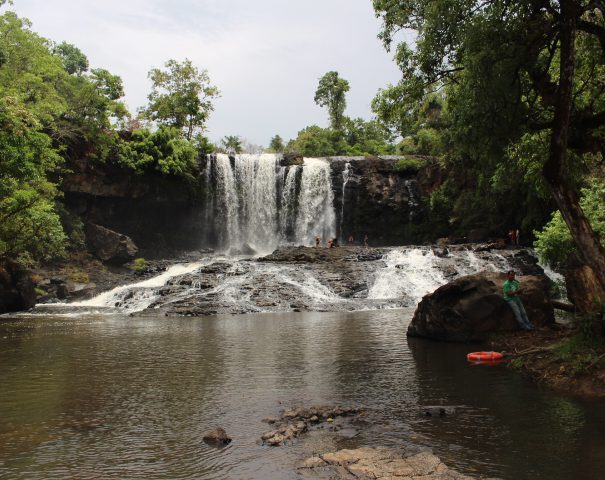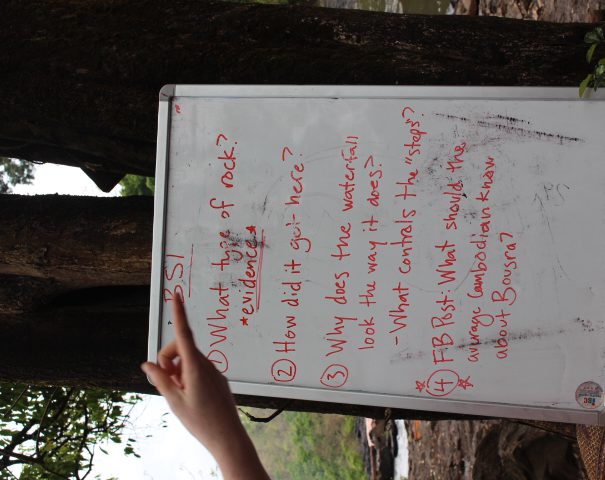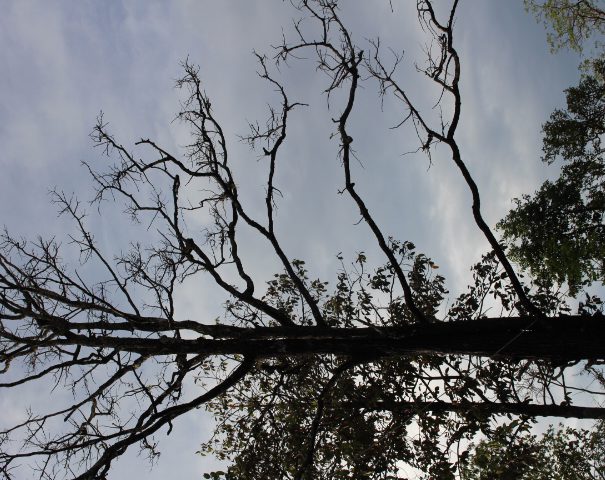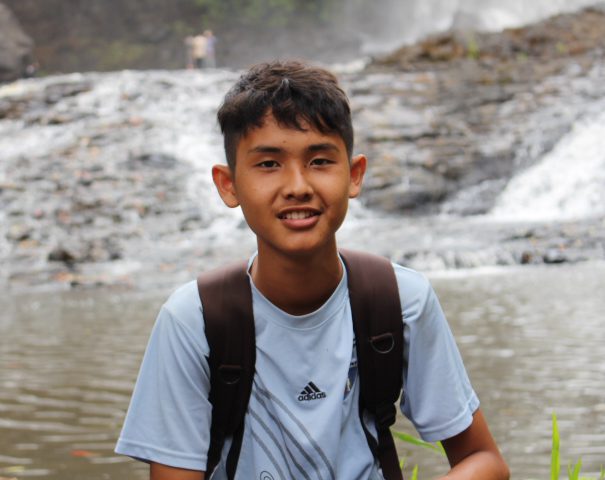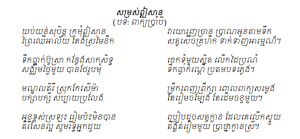This term we were studying about polynomial and rational functions. It involved how to divide polynomials, real and complex zeros, graphing polynomials, and rational function. From using the precalculus book as well as Khan Academy as our main resources, I can practice the skills that I have learned in class. I personally think that the topic in Khan, Exponential Growth and Decay, is the hardest among the practices I have, and it took me the most time. However, through working with my friends and asking clarifying questions to the teacher, I can get it further. 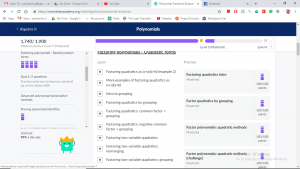
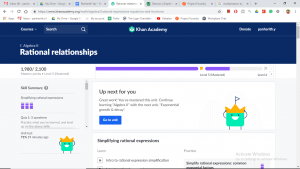
The First Eatable Experimental Product | S’more Lab
This lab is the first time ever that we were allowed to actually eat the experimental product which is the s’more. After learning how to balance the chemistry equation, experimental and theoretical yield, and limiting and excess reactants we simulate this lab to further our understanding in those areas. Limiting reactant is the reactant is all used in the experiment and excess reactant is the reactant is leftover in the experiment. Experimental yield is the actual product that we got in the experiment and in this case is the mass of the s’more and theoretical yields is the product that we should get. After the experiment, my team actually found out that the percent yield is 101% because our experimental yield is bigger than our theoretical yields, the denominator.
Literacy: American Civil War Poem

American Civil War,
Caused the whole country to struggle
The war between the North and the South,
Through oppositions that had been aroused.
The first reason is the Climate and Slavery,
The main reason caused the huge tragedy
The weather is hot in the South,
Depending on slaves in every house.
The nutritious soil in the region,
Allowed them almost year-round growing seasons
They need workers who’ll work for free
So they brought and support the slavery.
Growing and harvesting of such crops as rice, cotton, and tobacco
Allowing their economy to grow.
Southerners enslaved Black Africans for free labor
To increase their production in agriculture.
As in the North the temperate weather
Has low dependant of cheap farmers
They rely on the growth of an industry
The reason that made them opposed to slavery.
The second cause is lacking of compromise,
The two regions only cared about their own enterprise,
The South wanted to count the slaves as white people
To increase the number of representatives in the Capitol.
At the same time they don’t want the “same blacks included in the number of citizens”
“For which the states had to pay taxes to the central government.”
As in the North there were less slave,
Losing the election
The two regions deeply disagreed on other issues, such as the states’ rights
Also the main reason that led them to fight.
The South became so inflamed with this controversy,
“which 630,000 young Americans died in the bloodiest war of [their] history.”
The South creating their own culture,
Created “a ruling class with economic interests, political ideals” and strong code of honor.
The South become even more violent,
It is one of the reasons that led to the mounting tension.
The main causes of the American Civil War,
Not enough compromises in the federal
Different perspectives on the government
Also the different opinions on slaves dependant.
Those were the reasons behind the tragedy
Causing thousands death and injury
The war lasted about 4 years,
630 thousands Americans had disappeared.
The victory went to the North, led by President Lincoln,
The hero to millions of slaves and an Americans icon.
Fighting in the bloodiest war in the history,
Ended the dependent on slavery.
Chemistry: Flame Test Lab
Objective: To observe the relationship between various elements and their emission spectrum.
Introduction:
Flame tests provide a way to qualitatively test for the presence of specific elements by seeing colored flames. The heat of the bunsen burner excites the electrons in the atom, and this energy is released as the electrons “fall back” to their ground states. The color we see is a combination of the visible wavelengths of light emitted by the atoms.
If you have a spectroscope you can also make quantitative observations. A spectroscope can be used to see a pattern of narrow lights called an emission (bright-line) spectrum. The actually wavelengths of the spectrum serve as a quantitative test to determine atoms identities. Each element has a different “pattern” of electrons, so it will show a different combination of colors.
In this lab you will perform flame tests on seven different elements. You will use your observations to identify an unknown solution.
Prelaboratory Questions: (In a section labeled PRELAB- answer the following questions in FULL sentences)
- Why do we see colors in the flame tests?
- We see color in the flame lab because the bunsen burner excites the electrons i the atom, and the energy is released as electrons and showing the quantized energy which we see the color.
- How will we be testing the substances qualitatively?
- We will testing the substance qualitatively by observing the color of different salt compound and check the wavelength of those color.
Materials:
Safety goggles , wood splints, tongs/tweezers, Bunsen burner, test tubes with various compounds
Safety:
- Safety goggles must be worn at all times
- Many of these salts are toxic. If you come into contact with any of the compounds make sure to notify teacher and wash the contacted area thoroughly. Wash your hands before leaving the lab!
Procedure:
- Light the Bunsen burner (turn the gas on so you can just hear it, then use the striker)
- Place the wood splint for each compound into the flame using tongs or tweezers- ONE AT A TIME!
- Take note of the color of the flame and return the wood splint to the solution.
- CLEAN UP YOUR STATION! Carefully put the stoppers back on the solutions! Make sure the station looks like it did when you started! Let me know if you need new splints!
- Wash your hands thoroughly before leaving the laboratory
Data Table: make a section of your lab labeled Data Table and make a data table similar to the one below to record your observations.
Compound |
Color of Flame (qualitative) |
Wavelengths of light (in Å) (quantitative) |
| Barium Chloride | Yellow | 570 nm – 590 nm |
| Calcium Chloride | Orange-ish-red | Orange: 590 nm – 620 nm
Red: 620 nm – 750 nm |
| Copper (II) Chloride | Green (abit Blue) | Green: 495 nm – 570 nm
Blue: 450 nm – 495 nm |
| Lithium Chloride | Red-ish-pink | 620 nm – 750 nm |
| Potassium Chloride | Orange | 590 nm – 620 nm |
| Strontium Chloride | Red | 620 nm – 750 nm |
Unknown #1 |
Red-ish-violet | Red: 620 nm – 750 nm
Violet: 380 nm – 450 nm |
Discussion and Analysis: (In a section labeled Discussion and Analysis answer the following questions in complete sentences)
- How do your results from the flame test provide support for quantized energy levels? Explain your answer.
- The results from the flame test provide support for quantized energy by the number of the wavelength that we know from the color of each of the salt compound.
- The unknown compound is one of the other six. Identify it and explain HOW you figured it out using the results of your experiment.
- The unknown compound is one of the other six, and I think it is the Lithium Chloride because they have the same quantized energy and during the experiment the color of both compound is the same.
Conclusion: (answer in a complete paragraph and in complete sentences)
What are two possible sources of error for this lab. How would the errors affect your lab? What would you do differently next time to counteract these errors?
- The two possible sources of error for this lab would be the drop of the previous chloride onto the flame in which will cause in bias result of color of the next compound. Another one is about how we interpret the color where it will lead to different interpretation of the wavelength or quantized energy of each of the compound. So the next time we do this lab we will need to make sure the flame is clean after testing for one compound before testing another compound. And trying to do more replications for each of the compound so that we get the valid result which mean the valid color and quantized energy.
Khmer Essential: Writing The First Khmer Book
This term we had published our first ever Khmer book which is the Khmer poems. We’ve been working on this project about 2 years now, and finally we can published it happily. At first the students in the class learned different types of Khmer poems and then we started to write our individual poems. In that class, I wrote about 8 poems within the course of 3 weeks about different occasion, including love, places, and the sight in Cambodia. Our book is about 200 pages covered about 6 different topics. On the other hand, we also participate in the Khmer Reading and Writing Festival in Battambang to promote our book. At there we got to know some of the well known writers in Cambodia and share our Khmer poem book to them. Currently, we are working to find fund and sponsorship in order to publish more books.
Preparing for SAT 2018
In the first term of the new school year of 2018-2019 specifically in math essential, we focus on SAT preparation. On the other hand, during our first two weeks after coming back from summer break we been training through the SAT Bootcamp with two mentors Amanda, an ESL teacher from an all-girls school in New Jersey; Kim, a recent Princeton grad in Computer Science. In that class, the mentors shared with us their experiences and tips to efficiently solve and analysis the text using different textual evidence or how to solve the math question effectively.
For math, we’ve been practiced multiple exams on papers and took the simulated exams in Khan Academy. In addition, in the math essential, we used a lot of Khan Academy tutorials to learn and practice those questions that might occur in the real SAT exam.
After the bootcamp as well as the practice in class during the math essentials I feel a bit more confident in doing those questions, on October the 6th.
A Group of Tests Versus A Pride of Ligers
As we get closer to the final term of the year I personally need to sprint; there no time to walk and enjoy the moments. There are many projects and lessons we need to complete both for the facilitators and students. Specifically, during the month of May, we have a lot of big tests; for me, this year I’ve studied the AP Statistic in one of the essential-math. We are ages 14 to 16-year-olds. If we do well in this college-level course, we will gain credit toward studying at the college abroad in the future. Since this is a college level concept and it’s already hard for us but most importantly we are the second language learners so this will add another step of difficulty. We’ve been practice on doing the test that already exists with the given time. Finally, the day comes, on the 17th of May, a group of us took the test with a lot of pressure. Oppositely, we feel relief after the test, where we can rest our shoulder from the concept that we already study for a school year.

Besides, on the 21st and 22nd of May, we took another test-MAP that encompasses Language, Reading, and Math. This test would allow both the facilitators and us as students to see how we have improved since last year and what we need to keep our head on. I feel really excited afterward although I’m a bit nervous at first.
Physic Behind Superhero Research
This year we get real deep into physic. We study about different physic in waves. Moreover, we get to do a lot of fun stuff, for example, researching about physic behind our favorite superhero in Marvel. My task was to choose a superhero and connect their superpowers to the laws of physics, identifying which parts of your hero’s powers might be possible, and which parts might not be so possible. Moreover, we needed to make a poster that demonstrates what is our researching paper is about.
My favorite superhero is Thor. I researched a lot about his hammer, Mjolnir; moreover, I also researched how Thor able to fly using his hammer. In this way, we can understand more about the physics that we never knew before but most importantly we can connect what we already learned to our superhero. Here is the research paper.
Although this project kind of difficult to research about, I really enjoy doing the research, especially get to learn more about your favorite superhero. This project allows me to understand more about the physic concept that I already learned particularly the new physic concept that I never know before.
Khmer Poem | Beauty of the Northeast of Cambodia
This poem is about the beauty in the northeast of Cambodia, in Mondulkiri. I have personally been there to investigate about geology and I recognize the peacefulness and beauty of those places. I use a lot of comparison in this poem as well.
I start with, the night dreaming about a girl in the northeast of Cambodia, that the wind sending her to me on the floating water, while the sound of nature laughing and making noise attracted my feeling. Bou Sra waterfall is a greatness place that the man pray by using banana and incense to be with the girl while the waterfall making a sound like an instrument is playing. There are many things in Mondulkiri, a lot of mammals and birds but I only interesting in a tall that compare to a goose that people giving the value which is a beautiful tree name, Chan. The man is asking the permission from the spirit of the mountain to maintain the loyalty of the man having for the girl.
Nefarious November Short Stories
Nefarious November is the time that we read many different stories that are about murder, scary, witchcraft, and many other blood-curdling short stories. After finishing one of the short stories we are creating a PACE response about difference literacy devices such as irony, foreshadowing, and symbolism to show ours comprehend, practice providing textual evidence, and improve the writing skills. We had read the “Lamb to the Slaughter”, “The Landlady”, “The Black Cat”, and “The Tell-Tale Heart”, by Roald Dahl and the Master of Horror, Edgar Allan Poe. Here is one of the PACE response to foreshadowing device:
“The Landlady” by Roald Dahl
November 20, 2017
Foreshadowing is an advance sign or warning of what is the upcoming, in the future of the story. The author uses foreshadowing to add dramatic tension to the story by building anticipation about what might happen next. Authors also use foreshadowing to create suspense or to communicate information to help the readers to understand what will come. In the story, “The Landlady,” Roald Dahl uses many foreshadowing to assemble reader’s mind toward the story. In this short story, there are many traces of foreshadowing that Roald Dahl uses. As the story stated, “But my dear boy, he never left. He’s still here. Mr. Temple is also here. They’re on the third floor, both of them together.” This demonstrates one textual evidence that readers can presume that something must have happened in the story; for me as a reader, I can infer that the landlady already stuffed Mr. Temple and Mulholland and kept them on the third floor together and now she is waiting to stuff Billy as well. For example, “The tea tasted faintly of bitter almonds, and he didn’t care for it…” This is where the readers are able to anticipate the story that the landlady is attempting to poison Billy in order to stuff him like the other two. As the quote stated, “Everyone has to do that because it’s the law of the land, and we don’t want to go breaking any laws at this stage in the proceedings, do we?” This verification, the readers can indicate that the landlady also going to murder Billy as stated that she is going to break the laws in the future, which is to kill Billy. So Roald Dahl uses a lot of foreshadowing in this short story in order to engage reader’s mind into his story in order to predict the story ahead as they notice one evidence in the story.

